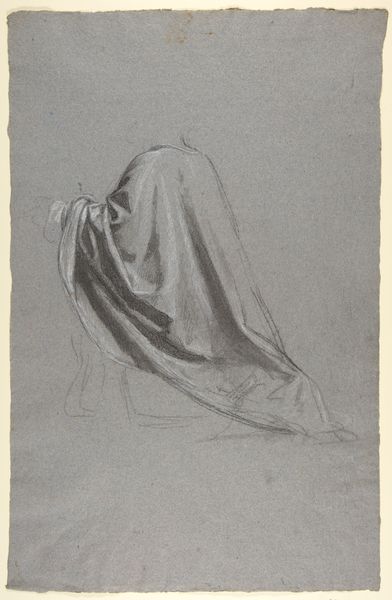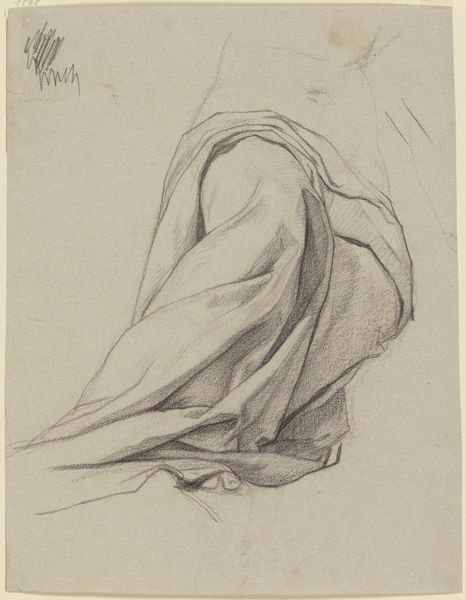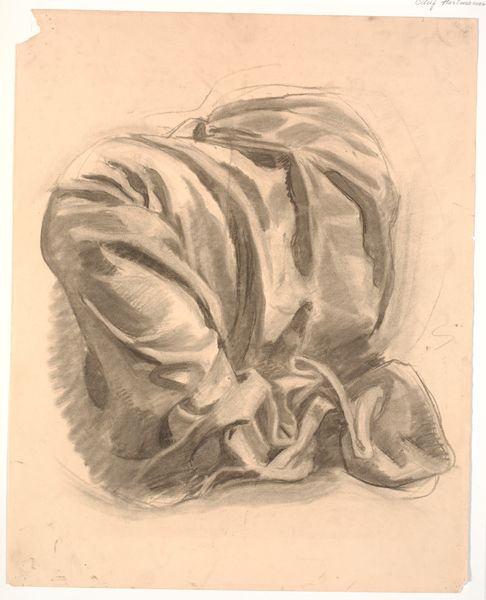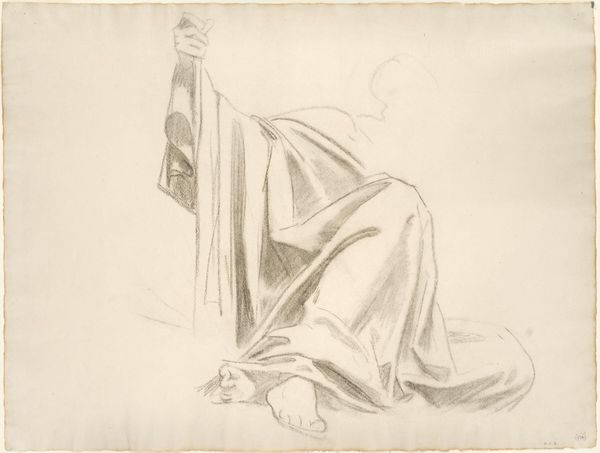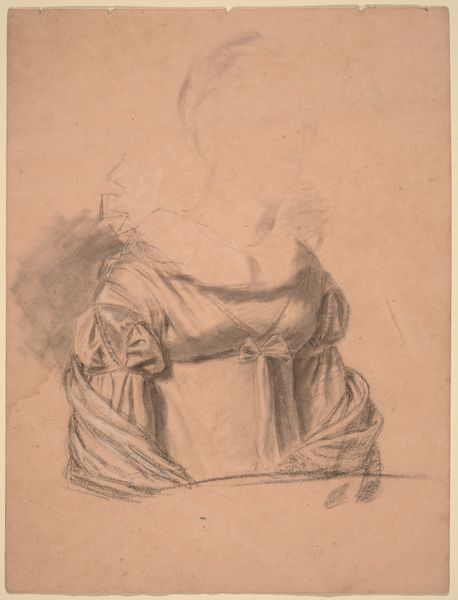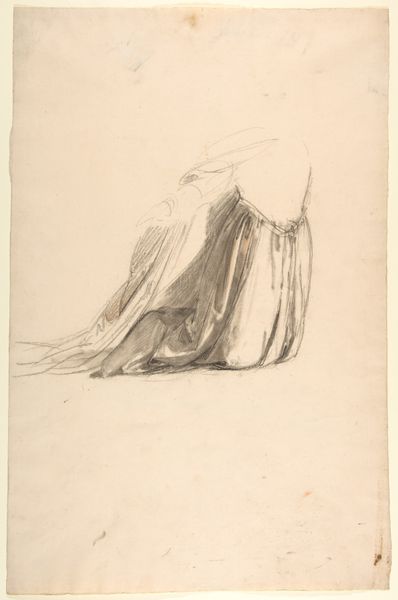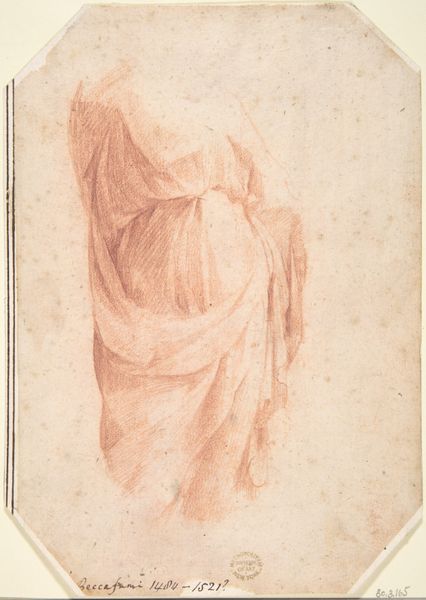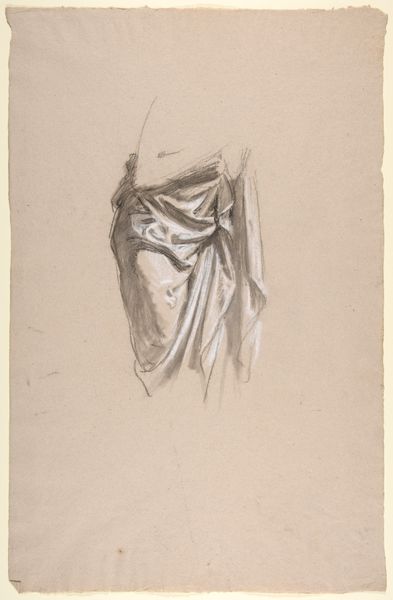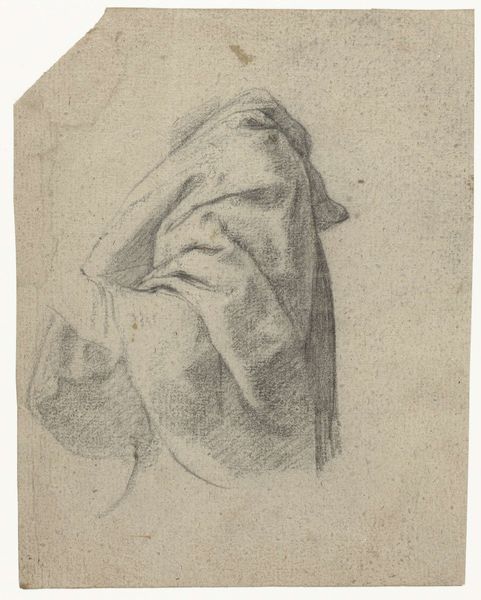
drawing, pencil
#
drawing
#
ink drawing
#
pencil sketch
#
etching
#
form
#
pencil
#
academic-art
#
realism
Dimensions: 205 mm (height) x 212 mm (width) (bladmaal)
Editor: Here we have Christen Købke's "Draperistudie," created between 1842 and 1845. It’s a pencil drawing of fabric folds. The intense focus on the drapery makes it seem monumental, almost like a sculpture. What significance does this piece hold within Købke’s broader artistic practice and the art world at the time? Curator: This drawing offers a fascinating window into the academic art training of the 19th century. Drapery studies like these were essential exercises. By meticulously rendering folds and shadows, artists mastered realism. Consider the socio-political implications of academic training - it upheld specific aesthetic values, largely determined by wealthy patrons and institutions, shaping artistic careers and legitimizing certain styles, namely realism. How might this relate to Købke's aspirations? Editor: I hadn't considered the political aspect. So, mastering drapery wasn't just about technical skill; it was also about adhering to the artistic expectations dictated by powerful institutions? Curator: Precisely. The Academy played a gatekeeping role. Displaying mastery through studies like this provided access. Now, notice how Köbke treats the light. It almost dissolves form. In a subtle but real way, Købke seems to be pushing past what he was taught. Do you see this leading towards something that diverges from what was popular or promoted at the time? Editor: It’s less about opulent display and more about quiet observation of light. Perhaps this hinted at future directions in art that favored observation and personal experience over grand historical narratives. Thank you for that deeper look. I will think of academic art very differently from now on. Curator: Indeed. And in turn, seeing such works in context is essential to understanding the evolution and sometimes even revolution within the art world. It shows art not just as something pretty but instead as evidence of the politics of representation.
Comments
No comments
Be the first to comment and join the conversation on the ultimate creative platform.
